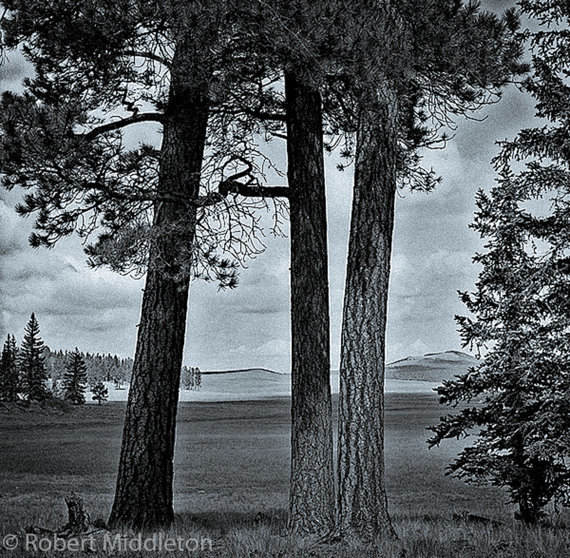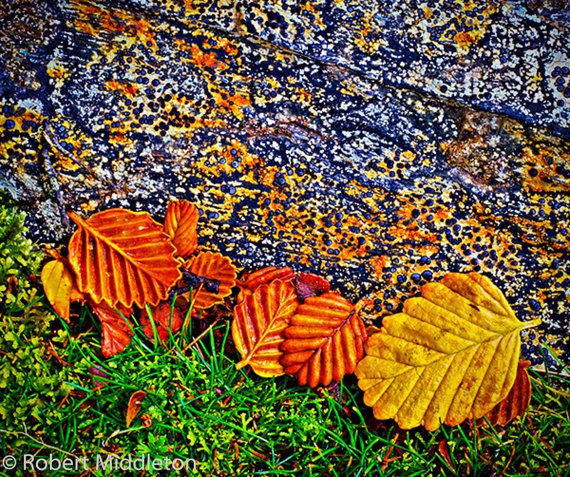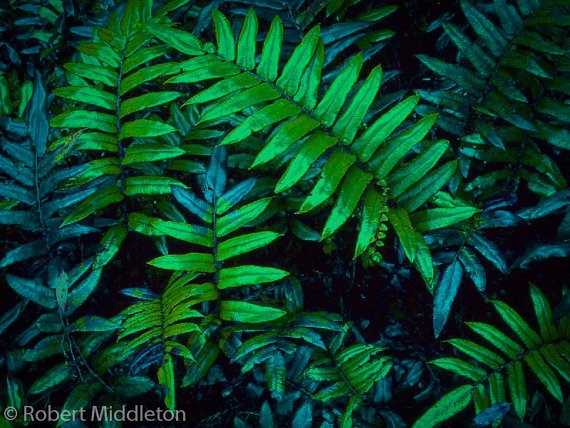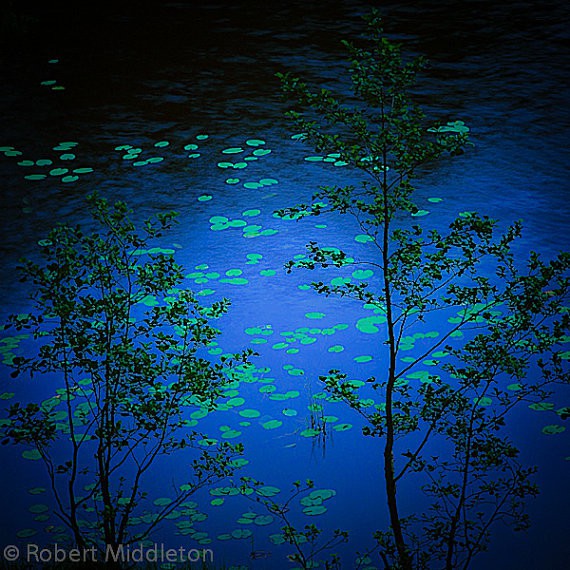I first contacted photographer Robert Middleton about featuring his work because I loved his saturated colours, rich textures and beautifully balanced, quiet compositions. They have a wonderful sense of simplicity and show a deep admiration for the gentleness of nature, and the beauty of its details.
Robert wrote back to me to tell me that these images are from his many years of travelling the globe – he’d been on Etsy for only a few weeks, with many more images to be added. I got the idea that his is a life well-lived, loaded with memory and splendours seen.
I’ll let him tell his own story.
*
“I see many beautiful photographs these days that have a somewhat faded, aged appearance made possible by the wonders of the digital darkroom. As much as I enjoy these images, when I am looking through the viewfinder of my camera I don’t view the world that way. To me, Mother Nature fills every nook and cranny of the planet with color, and I want my photographs to celebrate that.
“My favorite locations to capture images are shaded, dark forests (such as those in Tasmania) where a heavy, sturdy tripod is required and exposure times can be as much as 15-20 seconds. No quick snapshots for me! My preferred way of working is to find a scene that speaks to me, and spend as much as an hour or more setting up my tripod and camera and making multiple exposures. I have spent countless hours all alone in remote locations, working quietly and enjoying the peace and beauty of the place. I use only manual cameras – no auto-focus, no auto-exposure. I prefer to focus through the lens, checking depth-of-field and taking light readings with a handheld meter. Sometimes I return to a favorite location multiple times and marvel how the scene changes depending on time-of-day and time of year. I returned to a favorite spot in Tasmania once a year for eight consecutive years to capture a handful of images that finally were acceptable. One of those was ‘Rainforest Ferns’. Others will eventually appear in my Etsy store. All of the images featured in my store are from my archives, and were made in the pre-digital days using Fujichrome Velvia film.
“I recall that when I was about 7 years old my father went away for a week. Where he went and why I was never told, but when he returned he brought gifts for my brother and I. When we returned from school that day, on my brother’s bed was a new baseball glove and on my bed, in a bright yellow box, was a Kodak Brownie camera. Why dad chose that for me I’m not sure, but it might have due to the fact that I greatly enjoyed looking through a drawer full of old family photos that captured my interest over and over.
“I could have used the single roll of black and white film that came with the camera to photograph my family, our dog or neighborhood pals. However, I headed to the scrub pine woods nearby where there were small squirrels in abundance that noisily scampered from tree to tree.
So, my first photographic subjects were wildlife. Sort of…
“The problem was that as soon as I approached, the squirrels headed for the highest branches well beyond the capability of the simple lens on my camera to bring relatively close. When I retrieved that first set of small black and white prints from the local camera store in our little town, the result was black tree limbs silhouetted against a burned-out white sky. My family and friends were puzzled about why I had shot so many pictures of tree limbs. They couldn’t see the squirrels. But I knew they were there, and perhaps that was when I decided that if a picture had meaning to me, I wouldn’t necessarily worry whether anyone else felt the same. Now, many years later, I still enjoy silhouettes.
“When I was a graduate student earning a small amount of money as a teaching assistant, I was able to buy my first professional-quality camera. It was about this time that the Sierra Club began to publish a series of stunning books featuring the work of the masters of nature and wilderness photography of the day. When I saw the work of Eliot Porter I felt that I had found my photographic hero. His quiet nature images, rich in color spoke to me in a way that was very intense.
“Another Sierra Club book featured the work of the great Ansel Adams, and his majestic images of the American west opened my eyes to the artistic possibilities of black and white. Years later, I had the pleasure of studying black and white photography with one of Adams’s former assistants.
“From an early age, I also had another interest – geology. I was quite a rockhound by age 10 and already well known among my friends and even some adults in the community as an ‘expert.’ People would bring interesting specimens for me to identify, which I usually could do. However, on one occasion, not wanting to admit that I didn’t know, I pronounced a specimen to be ‘Kryptonite,’ Superman being a popular afternoon show on TV in those days.
“Geology (specifically mineralogy) became my career and provided a way to travel far beyond the world of the small town in western North Carolina where I grew up and where most boys eventually went on to a tiresome life of working in a textile mill or furniture factory.
My career as a curator of minerals, gems and meteorites took me to some of the great museums around the U.S. and to field work in Morocco, Australia, Mexico, Canada, Sweden and many U.S. states. Always, I had a camera with me and used my photographic interests as a means of capturing the special places that I visited.
“It’s just as well that I never became a working professional photographer, because it never occurred to me to capture images that might have a commercial use or fulfil the requirements of a particular magazine or book publisher. I captured images because they appealed to me; if someone else liked them that was great. Most photographs that I have made throughout my life I felt compelled to take because the scene spoke to me so strongly that I simply couldn’t ignore it.
“Now, my traveling days are over. My world has gotten much smaller and consists of the small Vermont village where I live, my three cats and boxes of photographs that I am just now beginning to share with other people in hopes that others may enjoy seeing them.
“Over the years I made countless trips to Australia and always considered that my spiritual home. The pine forests and glacial lakes of Sweden also became a favorite destination. Now I am in ‘exile,’ and will never see those places, and other favorites, again, and the thought saddens me. Bringing my photographs out of their storage boxes and sharing them with others is my way of staying connected with those special places in my life.
“A tiny patch of Tasmanian rainforest that I visited over and over again during a period of eight years remains closest to my heart. Its days are numbered. It is a tiny relic of earlier times when the climate of Tasmania allowed rainforest to exist in places where today it is too dry and too warm. To get there, I had to travel a rough, treacherous logging road frequented only by huge trucks carrying giant trees out of the forest. It was a dangerous road and it was banned for rental cars.
“Because of its location in a deep stream gully, where the humidity and temperature are just barely tolerable, it exists almost like the last dinosaur. A warming climate, a local forest fire, commercial logging – all of these are serious threats. I took the chance to see it so many times and never regretted it. I would do it again in a moment if I could.”
*
You can find more of Bob’s work in his Etsy shop, CradleMountain.





HELLO, BY ANY CHANCE IS THIS THE SAME Robert Middleton FROM THIS WEB? http://WWW.PAMIRS.COM
I AM TRYING TO CONTACT HIM REGARDING HIS PHOTOGRAPHY
Hi Patricio, I’m really sorry but the only contact information I have for Robert was his Etsy shop, which seems to have disappeared… All I know is that he’s based in the US.
I wish you well, and hope you can track him down. Thanks, Julie